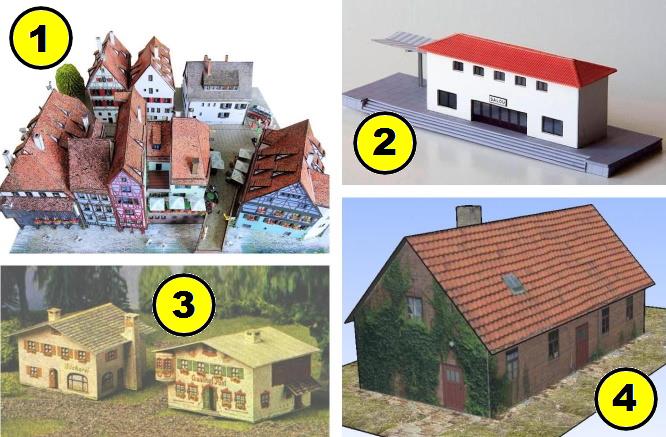Created by the talented German designer and model maker Jens Neuhaus, from the Papierdenkmal website and composed of 448 parts organized into ten sheets of paper (plus six instruction sheets), this is the 1/500 scale paper model of the Gasometer in Oberhausen, Germany.
A disc gas tank, like the one found in the Gasometer of Oberhausen, is a cylindrical storage structure commonly used for storing gases. These holders were built with a cylindrical shape and a lid or "disc" on top, which could be raised to allow filling and emptying of the holder, hence the name.
They were primarily used for storing gases produced from coal, such as coal gas, which were used for lighting and heating before the widespread adoption of electricity. The Gasometer in Oberhausen was a significant example of this type of structure in Europe.
Regarding this model, Mr. Neuhaus said: "When the Oberhausen gasometer went into operation on May 15, 1929, the panoramic view from the roof of the building was unimaginable: dust, ashes, and soot clouded the air over the Ruhr region, which at the time lived on coal and steel. In a two-year construction period, the Maschinenfabrik Augsburg-Nürnberg AG (MAN) built what was then the largest disc gas tank in Europe on the site of the Gutehoffnungshütte.
From then on, the top gas produced in the blast furnaces was no longer unused, but could be stored in the 350,000 m3 cylinder and used to heat the coke ovens.
With the end of heavy industry, the gasometer also lost its original function and was decommissioned in 1988.
Despite initial plans for demolition, the historic industrial building was placed under monument protection and converted into an extraordinary event hall featuring spectacular exhibitions and art installations since 1994.
Integrated into the New Oberhausen Center, built on the site of the old steelworks, the Gasometer symbolizes the structural change in the region: leisure, culture, and commerce now characterize the site that was once dominated by coal and steel."
Criado pelo talentoso designer e modelista alemão Jens Neuhaus, do site Papierdenkmal e composto de 448 organizadas em dez folhas de papel (e mais seis folhas de instruções), este é o modelo de papel na escala 1/500 do Gasômetro de Oberhausen, na Alemanha.
Um tanque de gás de disco, como o encontrado no Gasômetro de Oberhausen, é uma estrutura de armazenamento cilíndrica que era comumente usada para armazenar gases. Esses tanques eram construídos com uma forma cilíndrica e uma tampa ou "disco" no topo, que podia ser levantada para permitir o enchimento e o esvaziamento do tanque, daí veio o nome.
Eles eram usados principalmente para armazenar gases produzidos a partir de carvão, como gás de carvão, que eram usados para iluminação e aquecimento antes da ampla adoção da eletricidade. O Gasômetro de Oberhausen era um exemplo significativo desse tipo de estrutura na Europa.
A respeito deste modelo, o Sr. Neuhaus disse: - "Quando o gasômetro de Oberhausen entrou em operação em 15 de maio de 1929, a vista panorâmica do telhado do edifício era inimaginável: poeira, cinzas e fuligem turvavam o ar sobre a região do Ruhr, que na época vivia de carvão e aço. Em um período de construção de dois anos, a Maschinenfabrik Augsburg-Nürnberg AG (MAN) construiu o que era então o maior tanque de gás de disco da Europa no local da Gutehoffnungshütte.
A partir de então, o gás de topo produzido nos altos-fornos não ficou mais sem aproveitamento, podendo ser armazenado no cilindro de 350 mil m 3 e utilizado no aquecimento dos fornos de coque.
Com o fim da indústria pesada, o gasômetro também perdeu a função original e foi desativado em 1988.
Apesar dos planos iniciais de demolição, o histórico edifício industrial foi colocado sob proteção de monumento e convertido num extraordinário salão de eventos que apresenta espetaculares exposições e instalações de arte desde 1994.
Integrado no Novo Centro de Oberhausen, construído no local da antiga siderurgia, o Gasómetro simboliza a mudança estrutural da região: lazer, cultura e comércio caracterizam agora o local que outrora foi dominado pelo carvão e pelo aço."
Link: Oberhausen.Gasometer.Paper.Model.In.1/500.Scale.by.Papierdenkmal
More Architectural Paper Models related posts:




























